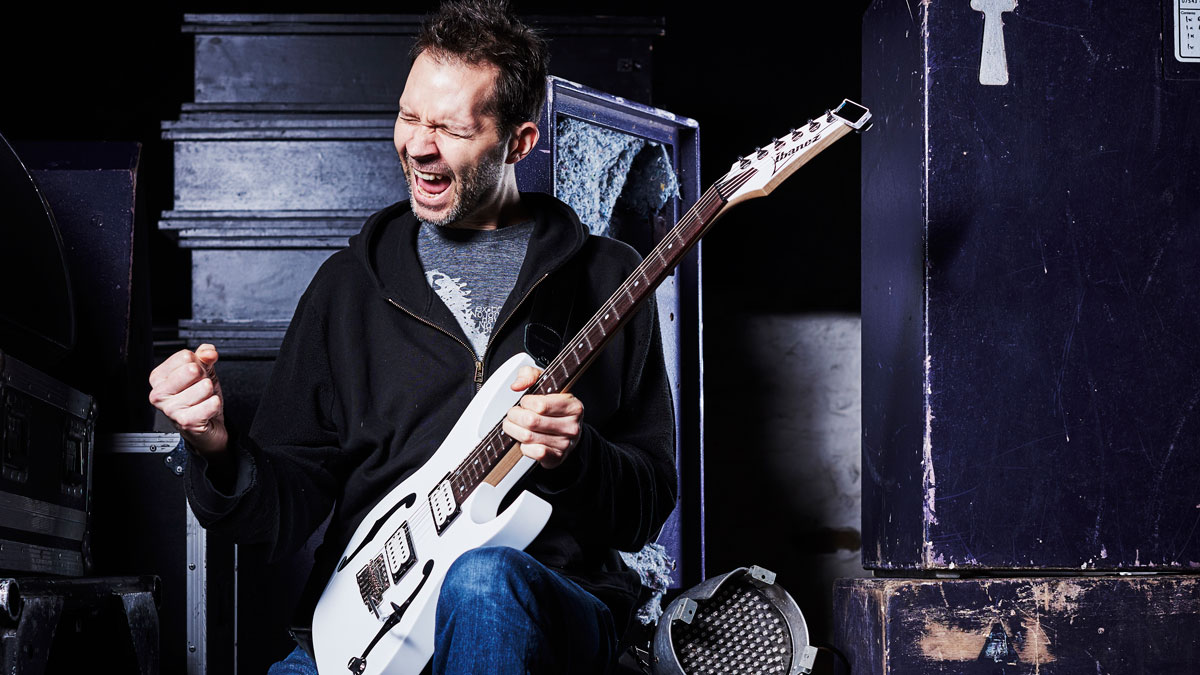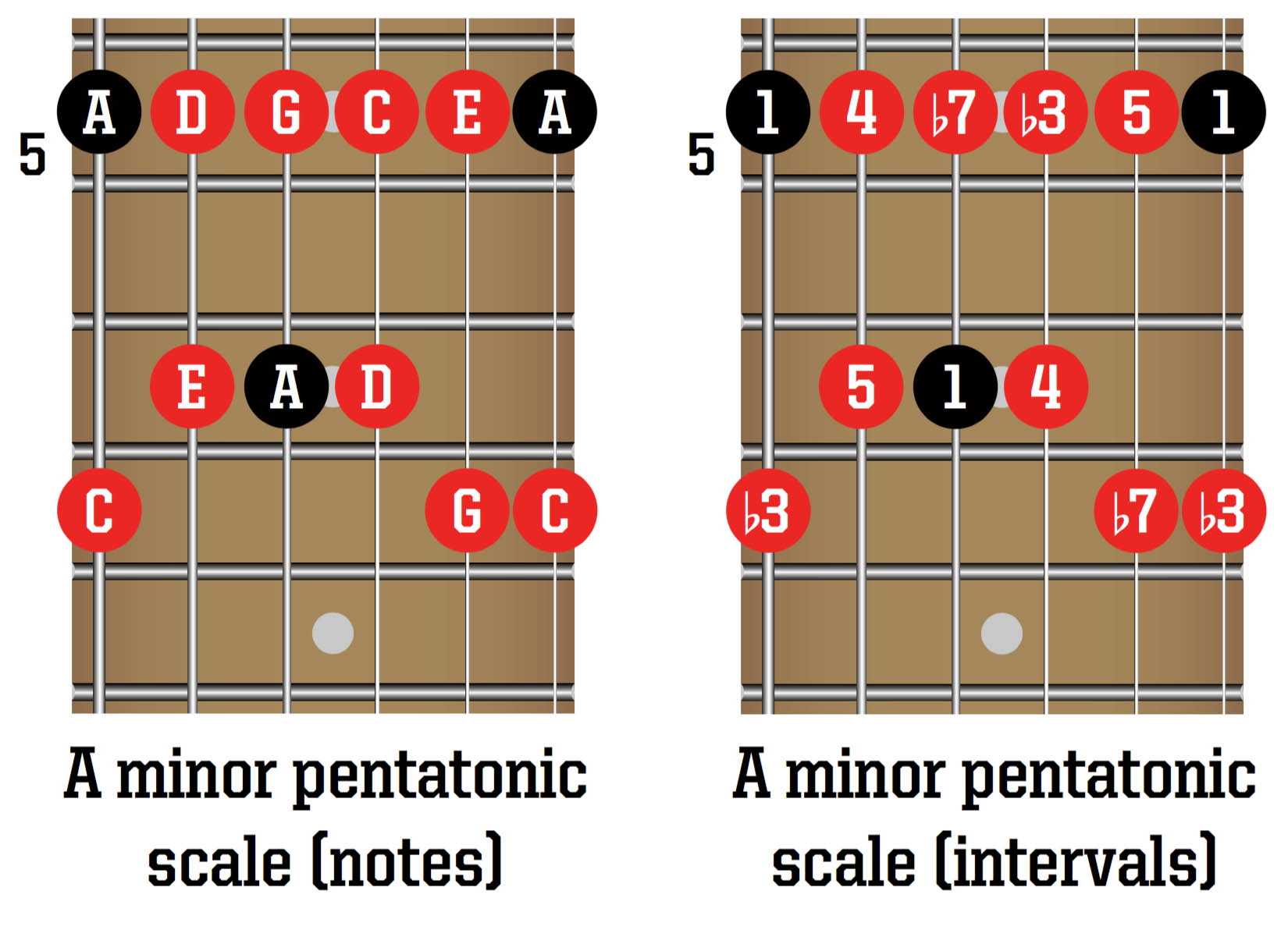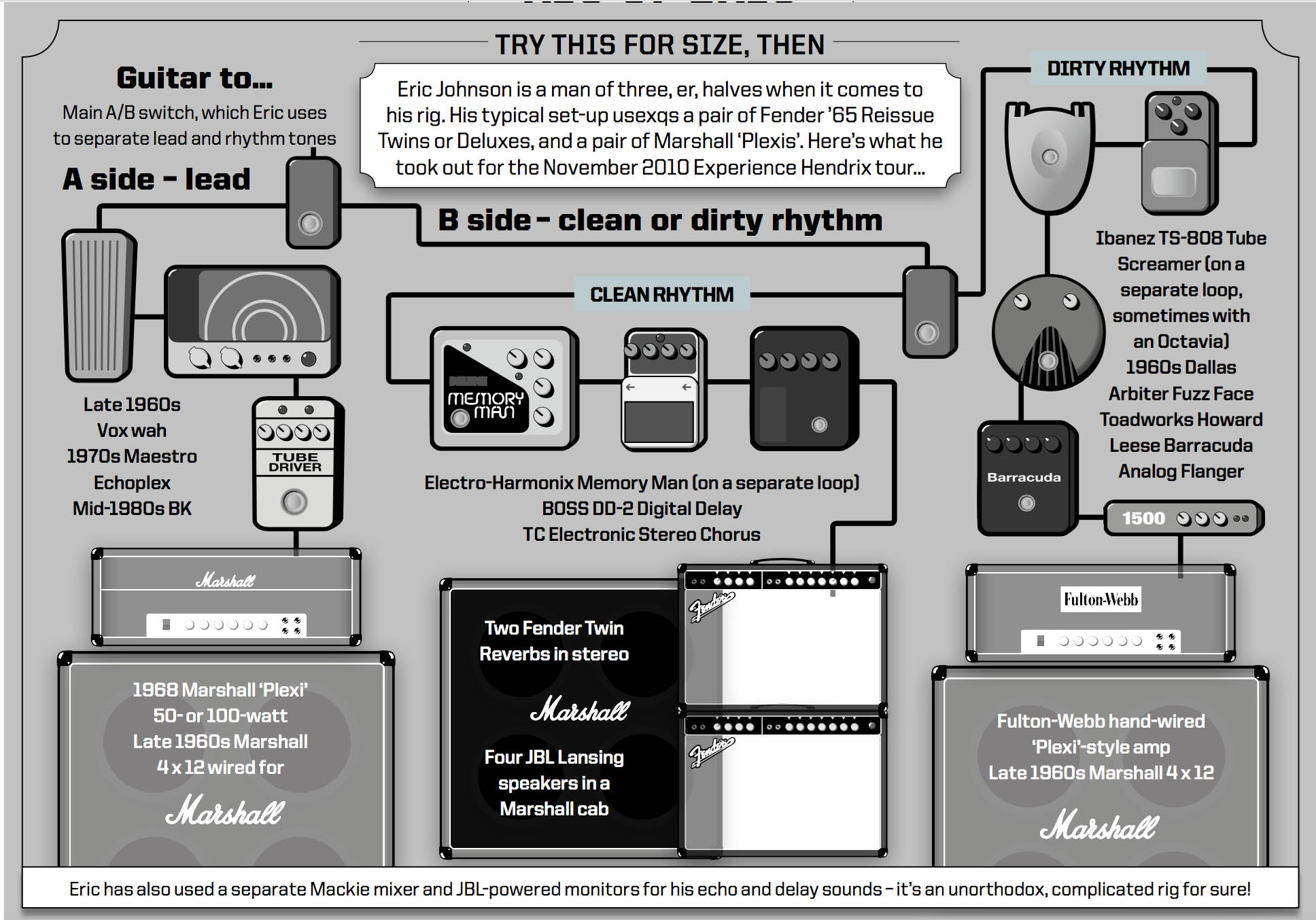The 100 greatest guitarists of all time
A comprehensive rundown of the best guitarists of all time, featuring the trailblazers, the early innovators, the best jazz, rock, indie, blues, metal and acoustic players – and the top guitarists around today...
The best shred guitarists of all time

1. Steve Vai
In two interviews, with Guitarist and Classic Rock, the virtuoso talked gear and guitars, revealed the secrets of his creative process, and discussed the art of shredding...
My First Love
“Once I saw a guitar for the first time at the age of five, I immediately knew the infinite nature of the guitar’s ability to be expressive. It was this beautiful thing.”
Inspiration
“If I have to sit down and write a new song I’m usually not very good at it, but when I pick up the instrument, something will always come out and I’ll document it. I’ve got thousands of ideas and thousands of boxes of DATs.
“Sometimes you just know that something’s coming and there are many different ways in which I’ll catch an idea. Sometimes I’ll do it by just singing straight into a microphone, or I’ll wake up in the middle of the night with a piece of paper and a guitar; if you don’t document those moments of inspiration you’ll never remember them!”
I’ve been experimenting a lot with stompboxes, but it’s funny – you get one of those boxes, and for a time it’s one of the greatest sounds you’ve ever heard, but after a while it’s like, ‘Whatever...'
Steve Vai
Perspiration
All the latest guitar news, interviews, lessons, reviews, deals and more, direct to your inbox!
“The song Oooo [from 1999 album The Ultra Zone] was one of those where I felt I had to get to a guitar real quick. So I picked up the first guitar I saw – a Bad Horsie JEM that was tuned down to C – and I just started playing that song. I got through it fairly cryptically by just playing and hearing a melody – it’s all ear – and I ran to the nearest cassette player, which was playing all weird, and got it down.
“Then I put it on the shelf and I didn’t come back to it until two years later. You see, every Christmas, I document all the little ideas. I heard that again and I thought, ‘I have to do this song now or I’m gonna explode’. It took me four weeks of 16 hours a day to complete it.
“Whenever I use the Whammy, I try to do so creatively. Most people just go ‘weee-wahhhweee-wahhh’. I’ve been experimenting a lot with stompboxes, but it’s funny – you get one of those boxes, and for a time it’s one of the greatest sounds you’ve ever heard, but after a while it’s like, ‘Whatever...’”
My Ibanez JEMs
“I pick up on other guitars and I try to play them, and it’s like, urgh, you know? I always go back to Evo, which is my main JEM, but I did use a Strat-type guitar that Ibanez built me. I went out looking for Fenders but nothing excited me, and the thing is you can spend a fortune on an old guitar, but it’s not necessarily gonna sound good. So they made three of them and we worked on it until it sounded great: more Stratty than a Strat... Oops!”
Shredding
“I’m having a blast on the track Jibboom [also from The Ultra Zone], and being able to play the guitar like that is so liberating. I piss myself when I play that song! Sometimes I like the idea of the guitar being handed to you on a silver platter; there’s nothing in its way, there it is, balls to the wall.”
My Trademark Sound
“I know what it’ll sound like if I put eight guitars on a melody in the treble pickup position with an amp that’s in the closet, and if they all hold out certain notes, mixed with vocals that are pitched along with a synthesizer sound. I mean, there is an element of experimenting – I’ll futz around with some sounds here and there – but I pretty much approach my music as a build: it’ll start out simple and just evolve.
“Often I’m surprised how it comes out because it’s better than I thought. That said, nothing’s off the cuff, absolutely nothing. I’ll know exactly what it’s going to sound like before recording and the torture is knowing it and being inundated with the pressure of making it real.”
The most important thing to remember when you’re playing modally is what the atmosphere of the mode feels like to you
Steve Vai
Lydian Flavours at the Heart of the Vai Sound
“The most important thing to remember when you’re playing modally is what the atmosphere of the mode feels like to you. What it sounds like is one thing, but what it feels like – the quality of that mode, that’s when you’re owning that mode. Look at it as an open field. One thing I like to do in Lydian is play every note in the scale except that raised 4th until the last note or close to! That will change the whole atmosphere.”
2. Yngwie Malmsteen
Yngwie talks his influences
“Here are some pieces that are good to, maybe not learn, but certainly draw inspiration from. For instance, Nicola Paganini’s 24 Caprices – and the ones in particular are 5, 16 and 24. Seriously, when you hear 5, you will think, ‘Oh fuck, Yngwie really ripped this shit off !’ Any piece of Bach’s music I listen to makes me feel miniscule... It’s so humbling. If I could bring any musician back from the dead, it would be him.”
3. Joe Satriani
Satch outlines one of his many trademarks: pitch axis
“On Not of This Earth, the E bass note comes in and puts the first chord in either E major or E Lydian. The next chord moves to E minor. The third chord moves it back to E major/Lydian and the fourth chord moves to E Mixolydian. The melody over the top reflects the changing keys. All the time the bass note is just playing an E note and it creates this funny vibe.
“You can also do it with a bassline that changes slightly. With Jupiter in Mind [Crystal Planet, 1998] shifts between E Dorian and E Lydian. The bass riff stays basically the same, but the intervals are adjusted to reflect the change in key. It’s pitch axis, but stepping up the quantity of notes.”
4. Paul Gilbert
Paul says… Look at intervals like colours
“Lately, I’ve been improvising and have found it’s really important to know the language of intervals, which is the relationship between each note. If you look at the pentatonic scale, it’s important to know how each one relates to your key centre. Find out where your 3rds are all over the neck; don’t think of them as ‘C’ or whatever – think of them as your minor 3rds.
It’s a bad habit for guitarists to simply just play scales in order; it’s much cooler to hear melodies with wider intervals
Paul Gilbert
“Those become your colours, and soon you’ll find there’s your blue, there’s your yellow and so on. Improvising is so important for creating melodies. It’s a bad habit for guitarists to simply just play scales in order; it’s much cooler to hear melodies with wider intervals.
“A good example of this would be The Beatles’ guitar solo on the song Birthday: the first two notes are a 5th apart. I would never have thought of that in a million years – guitar players naturally would go to the scale in order. It almost sounds like Ray Charles once you start connecting all the dots, so I’d say knowing your intervals is incredibly important.”
Take Paul’s advice and identify the intervals to breathe new life into this well-used scale.
5. John Petrucci
John’s ‘Hit and Miss’ philosophy: introducing the feeling of speed to your practice routine
John has a clever way of building speed – he calls it his ‘Hit and Miss’ philosophy. The idea is that you play faster than you are really capable, and, rather than thinking about hitting each individual note, you think about generally keeping your hands in sync. As John says: “I wouldn’t recommend you do it all the time, but it’s a useful tool and you can gain a lot of speed from it.”
Try applying John’s ‘Hit and Miss’ method to a favourite shreddy lick. Play for a couple of minutes at warm-up pace, then finish off by blasting through your lick at high speed. Even though at first you’ll probably miss more notes than you hit, the point is to let your hands experience the ‘feeling’ of moving fast. At some point your hands will hopefully synchronise.
6. Buckethead
It’s anyone’s guess why Axl’s choice to replace Slash was someone who could perfectly imitate an 8-bit video game, but it was guitar’s gain as this enigmatic maestro shot to prominence. After Vai, Morello, and Satriani, listeners could be forgiven for thinking they’d heard everything the guitar could do.
Buckethead showed they were woefully mistaken. Some of his ideas are more novel than musical, but others, like his legato licks performed while barring harmonics with the picking hand, have real applications. The influence of his teacher Paul Gilbert is often visible, but Buckethead is among the last true innovators.
7. Guthrie Govan
A shred phenomenon he may be, but Guthrie prefers to wax lyrical about ‘feel’
“The older, wiser player knows in an intuitive way that it’s the quality of the playing that counts. But if you are a beginner who’s looking to derive enough joy from the instrument so that you’re still pleased to see it the next time you practise, you need a mixture of those core values and things that are a little bit exotic or exciting. I think there’s a real value in learning the ‘forbidden mode’. When I was a kid, I didn’t actually care about soloing.
“Everything I did in those days was easy rhythm, lots of I-IV-V songs, for which I’m profoundly grateful, because if you are focusing on that type of music it’s not hard to play it, it’s only hard to play it well. Something I figured out a long time ago is this nebulous concept of ‘feel’ – how you play something; the dynamics, the timing and all the subtleties.”
8. Jason Becker
Perpetual Burn – Jason’s three biggest tips
1. Listen back to your playing
“There are so many fantastic guitar players out there and I just love seeing anyone with passion for guitar. I guess the most common thing is that some of them haven’t put enough time into developing their vibrato and bends. It is good to record yourself so you can see where you need to improve. Listen closely to your favorite players and try to see how far off you are – that’s exactly what I did. It is so much fun when you start to see yourself getting better and better.”
2. Think about note choices
“I have to admit that I haven’t cared or thought about this stuff in so many years. If I kept it in my mind, I would probably always be depressed! But I liked to mix up note choices and octaves in arpeggios.
“I might start with a low note, and then instead of playing the 3rd on the same string, play the 3rd an octave up, and then a lower 5th. It has been so long since I have thought about intervals like that, but my teacher Dave Creamer was a master of this kind of stuff. Him and Marty [Friedman] would often break scales into patterns of five or seven, which sounds really cool.”
3. Learn to break the rules
“What felt like the most groundbreaking lesson was something that Marty taught me, and that was once you’ve learned some theory, it’s more fun to break the rules. We would make up weird harmonies that made no theoretical sense, but we liked how they sounded, so thus it was good. If something is ‘wrong’ but it sounds interesting or funny, then it still can be good!”
9. Eric Johnson
Have a peep at Johnson’s live rig from the 2010 Experience Hendrix tour
10. Michael Angelo Batio
Three tips from the face-melting, double-necked axe toting shred pioneer
1. Make your weak hand stronger
“A lot of people don’t know that I’m left-handed, though I play right-handed guitar, but it actually worked out well for me for the first couple of years when I was learning, because I had to think of ways to make my weaker hand stronger with specific exercises. It wasn’t easy!”
2. Economy of motion
“What I still focus on, after all these years, is absolute economy of motion with my picking hand. I try to move it as little as possible from the elbow to avoid placing too much stress on my arm above the wrist. If you take care of those physical parts of your body you’ll find that it helps the rest of your technique, believe me. A lot of players don’t realise how crucial that focus is for the whole of your guitar playing.”
3. Try different genres
“I’m known for playing fast, and a lot of people expect very fast playing from me every time I play live. But I play in other styles too, and I’ll play them despite the pressure to just stick to fast playing. Right now I’m starting to learn a bit of bluegrass country picking because it’s a real challenge. A lot of shredders move away from rock and into jazz because the theory behind jazz is so much more challenging, but at the moment I’m enjoying the different sound and feel of country.”
Also in the running…
Tosin Abasi
Abasi throws unexpectedly complex chords into his visceral 8-string riffing, then turns around and perfectly executes slap bass licks on guitar.
Steve Morse
Most shredders would not even attempt Morse’s fearsome alternate-picked arpeggios. His artificial harmonic melodies are equally scary and beautiful.
Jeff Loomis
While others battled with 3- and 5-string shapes, Loomis swept effortlessly across seven strings, dazzling with extended range arpeggios.
Richie Kotzen
By 19, Kotzen had mastered every contemporary shred technique. He quickly tempered this with Hendrix-like soulfulness before losing his plectrum.
Greg Howe
With palm-muted pull-offs, hammer-ons from nowhere on descending arpeggios, and inventive tapping sequences, Howe changed the legato game for everyone.
Current page: The best shred guitarists of all time
Prev Page The best metal guitarists of all time Next Page The best alternative and indie guitaristsJonathan Horsley has been writing about guitars since 2005, playing them since 1990, and regularly contributes to publications including Guitar World, MusicRadar and Total Guitar. He uses Jazz III nylon picks, 10s during the week, 9s at the weekend, and shamefully still struggles with rhythm figure one of Van Halen’s Panama.









